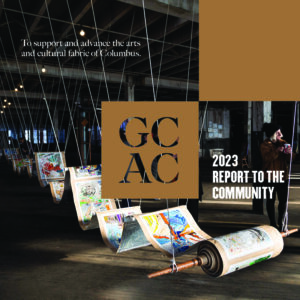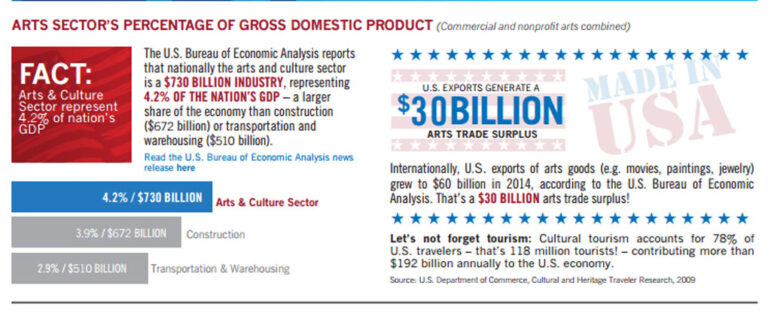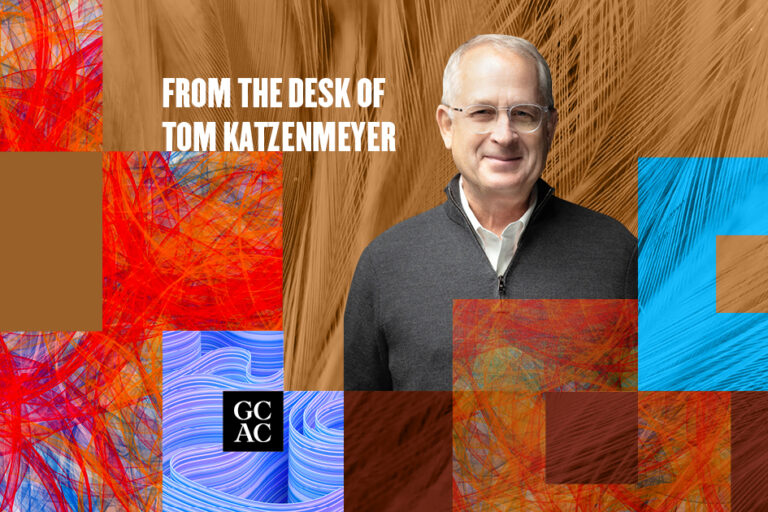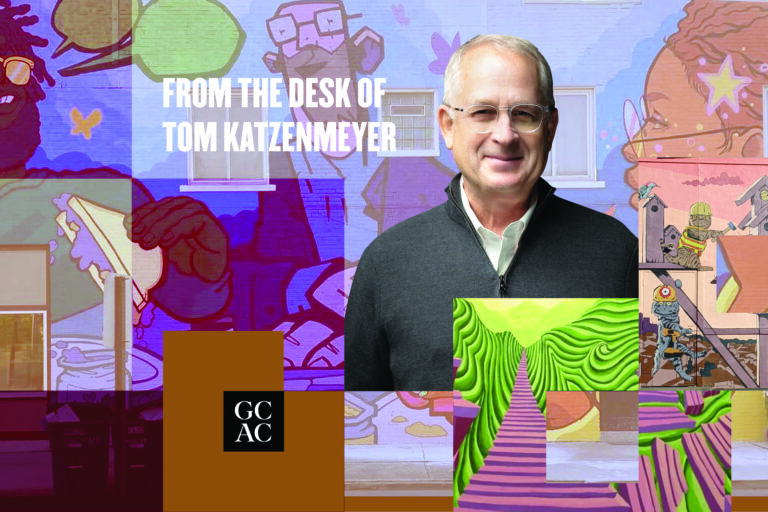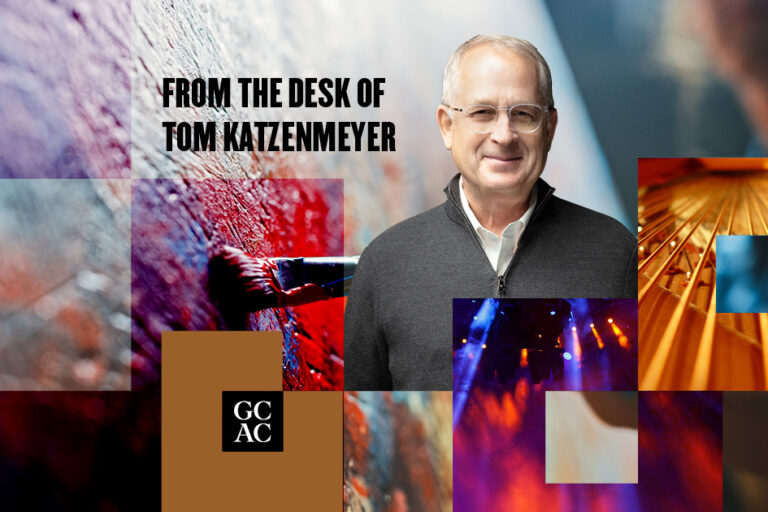3/16/17
President Trump released his budget today. As feared, and despite the best efforts of organizations like Americans for the Arts, the budget eliminates funding for the National Endowment for the Arts, the National Endowment for the Humanities and the Corporation for Public Broadcasting. This is the first time a sitting president has proposed eliminating the agencies since they were formed 50 years ago.
We cannot let this discourage us—it is just the beginning of our fight. With National Arts Advocacy day next week, March 20-21, our efforts must now focus on our congressional representatives. If you can travel to Washington D.C. to personally lobby on Capitol Hill, that’s wonderful. But we need your calls, emails and letters too. If you work for an arts organization, encourage your board to do the same.
Since President Trump has declared a focus on keeping and creating jobs in America, make sure you brief yourself on the newly released U.S. Bureau of Economic Analysis economic numbers. This report shows that the arts have grown to a $730 billion industry. This represents 4.2 percent of the nation’s GDP—a larger share of the economy than transportation, tourism, and agriculture—and directly employs 4.8 million people. If you’re pro-jobs, then you’re pro-arts too.
Contact your congressman and Senators Brown and Portman and make sure they know how important this federal funding is for arts and culture in Central Ohio. The federal government’s investment in the National Endowments for the Arts and Humanities and the Corporation for Public Broadcasting amounts to less than one-tenth of one percent of the federal budget. The investment in the NEA alone is only 45 cents every year, per person, in this country.
As the largest and most important national funders of nonprofit arts and cultural organizations in America, the National Endowments for the Arts and the Humanities leverage tax dollars by requiring a one-to-one match on grants. Recipients often go well beyond the requirement to match $9 to every $1 invested—ensuring those funds fuel a dynamic cultural economy, generate millions of American jobs and make the arts accessible in communities large and small across the country.
In Columbus NEA support takes the form of grants to organizations such as the Greater Columbus Arts Council, BalletMet, the Columbus Museum of Art, the Wexner Center for the Arts and nearly $1 million every year to the Ohio Arts Council to support their work bringing the arts to every county in Ohio. The NEA also supports Columbus-based artists such as dancer Bebe Miller, visual artist Ann Hamilton and Maggie Smith, a nationally recognized poet and one of our Art Makes Columbus featured campaign artists.
And, with a little-known program for insurance indemnification, the NEA provides critical support to museums assembling major exhibitions. Through this program, people in cities throughout the country can see major works of art that they might otherwise never see unless they traveled to a city like New York, London or Paris. Most recently the Wexner Center received indemnity coverage for two-thirds of the cost of a $320 million insurance bill for David Smith: Cubes and Anarchy.
That’s a lot of impact for your 45 cents each year.
As the chair of the NEA under President Bush, Dana Goia said in a recent interview, the requirement of matching funds for every NEA dollar, means the agency “serves as a national catalyst for local arts and local arts education.” Goia summarized it best when he said “what the NEA really does is fund art programs that are, for the most part, created in your community, by people in your community, to serve your community.”
Again this is just the beginning of the federal budget appropriation process. We need your help to convince Congress to #SavetheNEA.
Below are some additional resources to help you make your case.
Get the Facts:
- Americans for the Arts Statement on Arts, Jobs, and the Economy
- Infographic on Arts, Jobs, and the Economy
- Visit the Arts Mobilization Center for tools, resources, and information to help make your case for the arts and arts education, as well as ways you can take action today.
Take Action:
- Take two minutes to call or send a send a customizable message to your elected representatives in Congress and urge them to oppose any attempt to eliminate or cut funding to the NEA.
— Tom Katzenmeyer, connect with Tom on LinkedIn.

